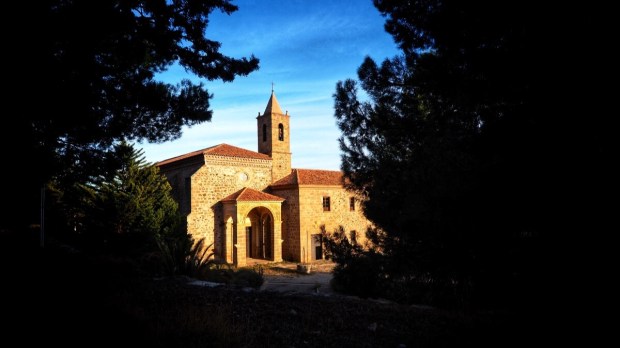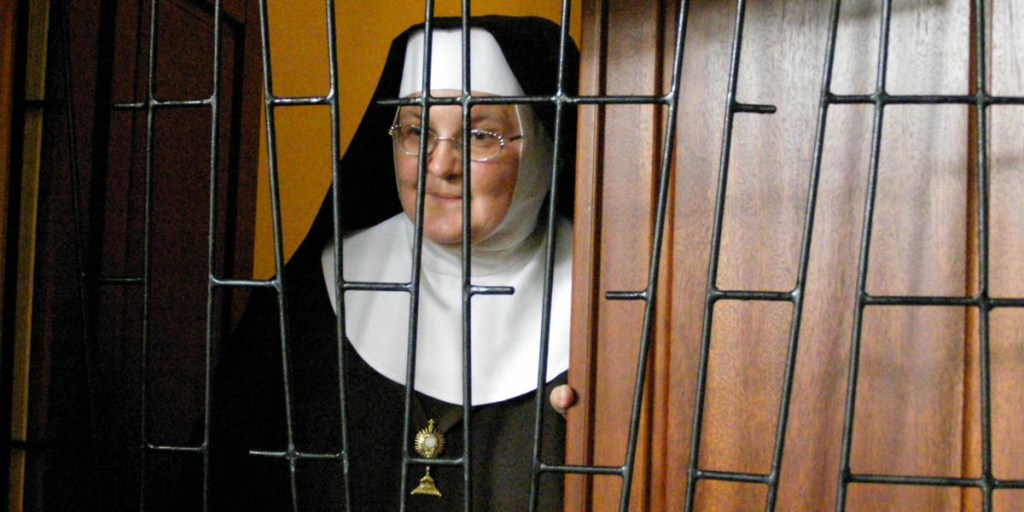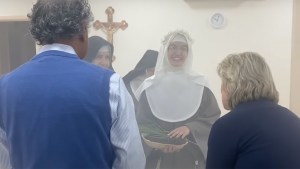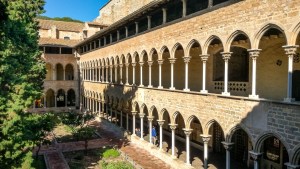A cloistered monastery or convent is a place where monks and nuns dedicate themselves to prayer, silence, penance and work, following a rule of life that helps them to seek God and serve Him with their whole being, separated from the outside world. These monasteries have an architecture and layout that favor community life and intimacy with the Lord.
Learn about a monastery’s spaces, their uses and their names:
1CHURCH OR CHAPEL
The church or chapel is the center of the monastery, where the monks or nuns celebrate the liturgy of the Eucharist and the Liturgy of the Hours. It’s the place where they meet Christ present in the tabernacle and in the Word.
It’s traditionally divided into two parts: the choir, where the Liturgy of the Office (also called the Divine Office) is prayed, and the nave, where the mass is celebrated. The choir is often separated from the nave by a grille or a lattice that allows the religious to participate in the liturgy without being seen by the faithful who come to the church.
More contemporary monastic chapels may not conform to the traditional layout.
2CLOISTER
An open space formed by four galleries with arches or columns. The cloister is the place of passage between the various rooms of the monastery, but it is also a place of prayer, reading, meditation, and recreation. In the center of the cloister there is usually a garden (called a garth) or a well, symbolizing paradise and the source of life.
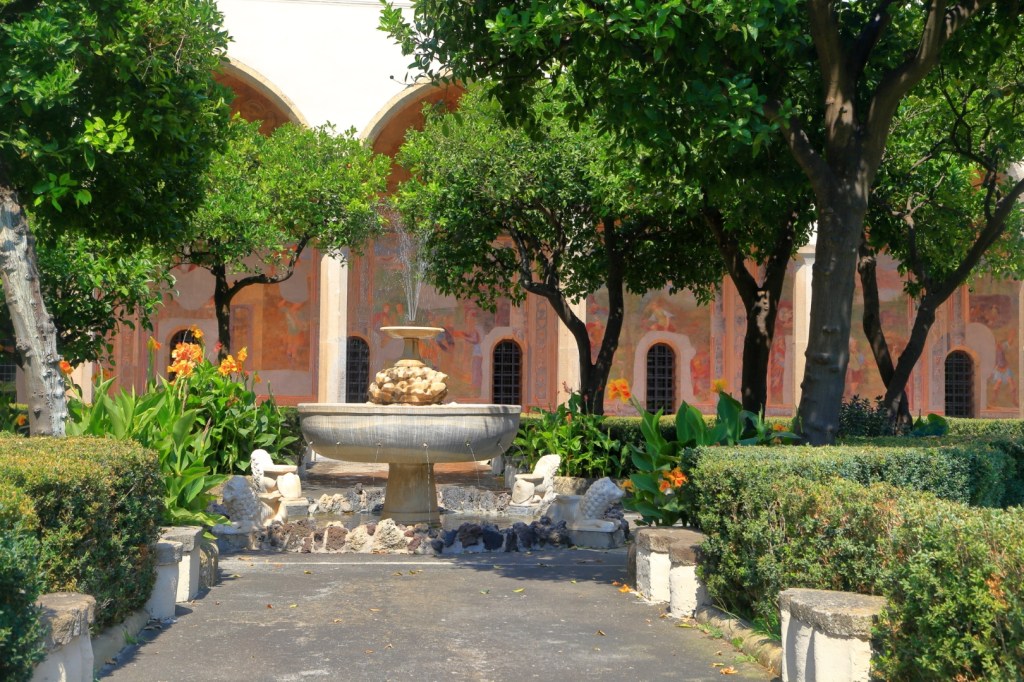
Because of its centrality in the structure of a monastery or convent, the word “cloister” can also be used to refer to the entire convent or monastery, or the form of religious life that includes being closed off from the world (“cloister” derives from the Latin verb “claudere”, “to close”).
3CHAPTER HOUSE
This is the place where the community gathers to discuss the affairs of the monastery, elect the abbot or abbess, read the rule, listen to fraternal corrections, and confess faults. The chapter house is usually located next to the cloister, sometimes in front of the church. It’s a place of great importance for community life, where unity and charity among the community members is expressed.
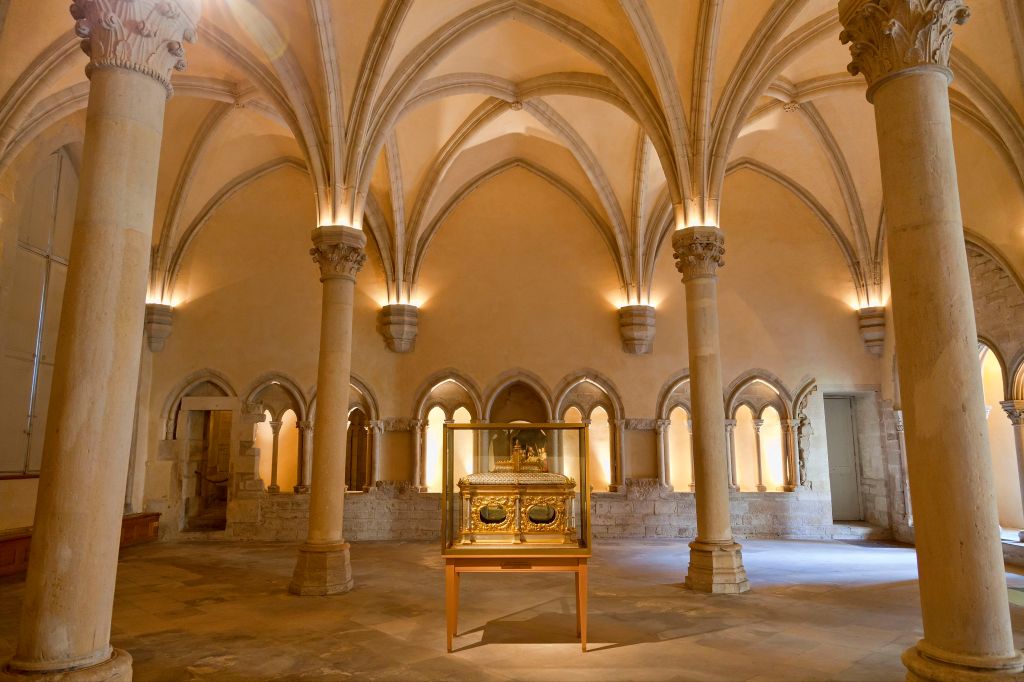
4REFECTORY
The refectory is the dining room of the monastery, where the monks or nuns take their meals in silence, listening to the reading of a spiritual or sacred book. The refectory is usually also next to the cloister, near the kitchen. In some monasteries there are two refectories: one for the religious and the other for guests or pilgrims staying at the monastery.
5CELLS
The individual rooms of each monk or nun, where they sleep, pray, study and work, are called cells. The cell is a place of solitude and intimacy with God, where the religious retreats to rest or for personal prayer. The cell is usually very simple and austere, with the necessities of life: a bed, table, chair, closet, a crucifix, an image of the Virgin, and some books.
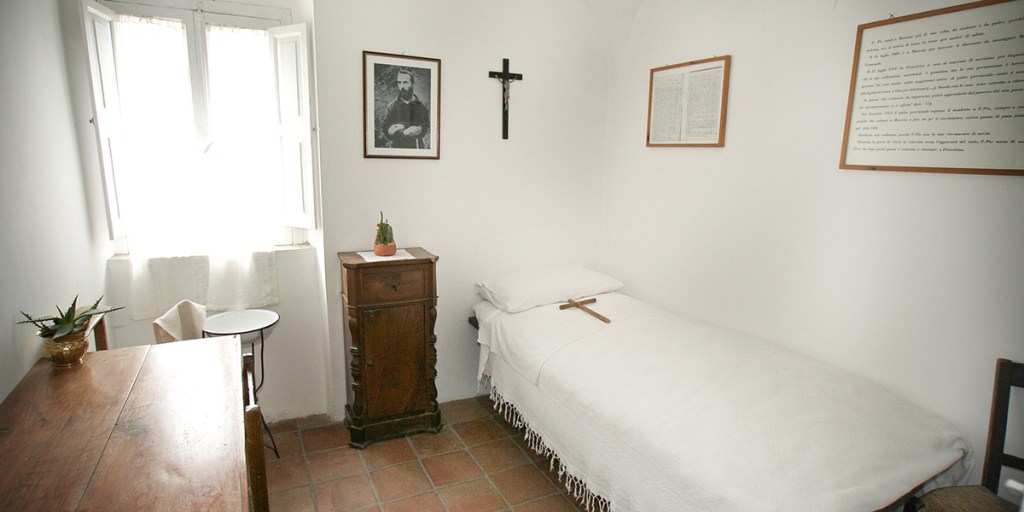
6Locutory
The locutory, speak room, or parlor is the place where monks and nuns can receive visitors or talk to people outside the monastery. It’s usually divided by a grille or lattice that prevents physical contact between the religious and visitors.
This room is a place where hospitality and charity are exercised with those who come to the monastery seeking advice, comfort or help.
7TURNSTILE
Monks and nuns deliver and receive objects to and from people outside the monastery or convent using a turnstile, a small revolving cupboard that communicates the interior of the monastery with the exterior while conserving their separation. Religious communities may sell products the monks or nuns have made, such as sweets, cheeses, liqueurs, soaps, and candles, through the turnstile. This is also one way that donations or letters are delivered.
These are some of the most common rooms in cloistered monasteries and convents, although there may be others depending on the order and the rule or traditions of each community. What they all have in common is that they are at the service of contemplative life, which seeks God in everything and through everything in physical isolation from the outside world.
